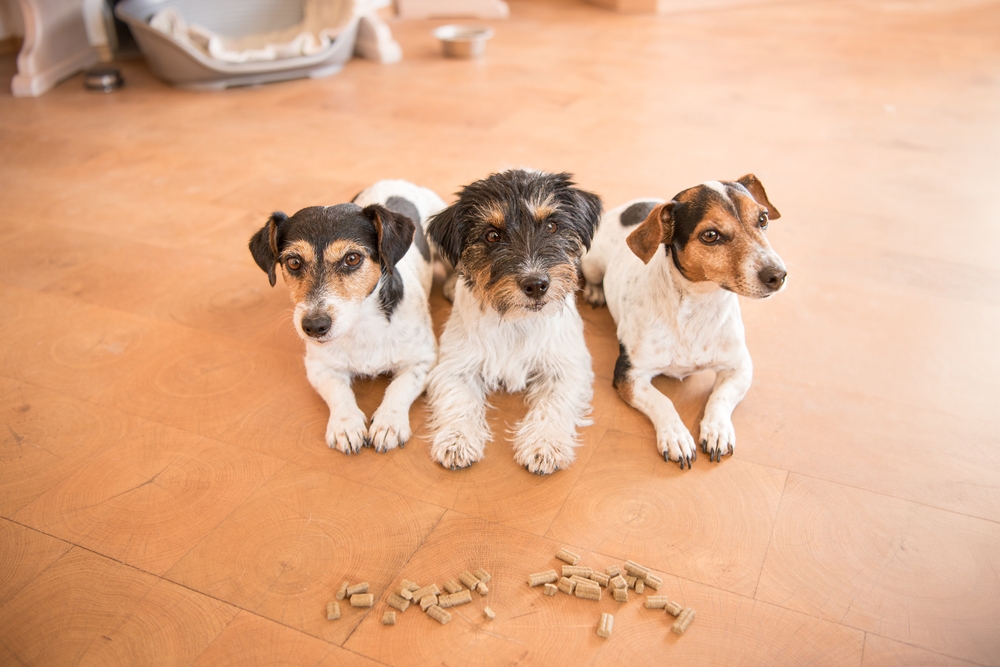If you’ve ever watched your dog dash out the door the moment it opens, snatch food off the counter, or bark uncontrollably when excited, you’ve witnessed poor impulse control in action. While it can be frustrating, it’s also a normal challenge many dogs face. The good news? With the right strategies and dog impulse control training, these behaviors can be managed and even transformed into calm, thoughtful responses.
At Innovative K9 Academy, we’ve worked with countless dogs who seemed hopelessly impulsive, only to see them flourish once given the right tools and structure. Let’s break down why dogs struggle with impulse control and how you can help them improve.
What Impulse Control Means for Dogs
Impulse control is a dog’s ability to pause, think, and make a better choice instead of reacting immediately. For humans, it’s like resisting the urge to grab a second slice of cake before dinner. For dogs, it’s waiting before rushing through a door, ignoring food on the floor, or calmly greeting guests instead of jumping.
While some dogs seem naturally more patient, impulse control is a skill that can—and should—be taught. Without it, dogs often make choices that are not only inconvenient but sometimes dangerous.
Common Signs of Poor Impulse Control
Dogs that lack impulse control usually display a few telltale behaviors, including:
- Jumping on people when greeting instead of waiting calmly.
- Bolting out doors or gates without checking for danger.
- Snatching food from counters, hands, or other pets.
- Demand barking for attention, toys, or walks.
- Overexcitement on the leash, pulling in all directions.
- Overreacting to triggers, like barking at every dog they see.
These behaviors aren’t signs of a “bad dog”—they’re simply a reflection of unpracticed self-control.
Why Some Dogs Struggle More Than Others
Impulse control struggles can come from a variety of factors:
- Breed tendencies: Working and herding breeds, for example, often have high drive and energy that can make patience harder.
- Early socialization: Puppies that weren’t taught boundaries may grow into adults with unchecked habits.
- Lack of consistency: If rules aren’t reinforced the same way every time, dogs become confused and impulsive.
- Environment: Overstimulating surroundings can overwhelm dogs, making calm choices harder.
- Past experiences: Rescue dogs with histories of neglect or stress may default to impulsive reactions as a survival strategy.
Recognizing these influences helps shape a training plan that addresses the root cause rather than just the surface behaviors.
Training Exercises to Build Patience and Self-Control
The key to dog impulse control training is structured practice. Here are some effective exercises that help dogs pause before reacting:
Wait at the Door: Ask your dog to sit and stay before the door opens. Release them only when they’re calm. This prevents door dashing and teaches patience.
Leave It: Hold a treat in your hand or place one on the floor, and only reward your dog when they resist grabbing it. This teaches self-restraint.
Place Command: Train your dog to go to a bed or mat and stay until released. It builds calm focus in distracting environments.
Impulse Control Games: Try “It’s Your Choice,” where you only reward the dog when they stop pawing or mouthing your hand with treats.
Structured Play: Games like tug or fetch can teach dogs to start and stop on command, reinforcing control even during excitement.
At Innovative K9 Academy, we often incorporate these exercises into everyday routines so dogs learn self-control in real-life situations, not just in training sessions.
The Role of Consistency in Preventing Impulsive Behavior
Dogs thrive on clear, predictable boundaries. Inconsistency—such as allowing jumping sometimes but scolding it at other times—confuses them and undermines training. Everyone in the household must follow the same rules and reward calm, patient behavior.
Consistency also means practicing regularly. Just like you wouldn’t go to the gym once and expect to be fit for life, dogs need repeated reinforcement to build lasting habits. The more consistent the practice, the faster you’ll see results.
Success Stories of Improved Impulse Control
One of our clients brought in a young German Shepherd who bolted out doors and dragged her owners on walks. Through structured dog impulse control training, we taught him to wait calmly before going outside and to check in with his handler during walks. Within weeks, his family saw a dramatic shift in his behavior.
Another success story involved a Labrador who constantly stole food from the counter. By practicing “Leave It” and rewarding calm behavior near food prep areas, she learned to wait patiently. Today, her family can cook dinner without fear of disappearing snacks.
These stories prove that with the right approach, even the most excitable dogs can learn patience and restraint.
Conclusion
Impulse control doesn’t come naturally to every dog, but it’s a skill that can be developed with practice, consistency, and the right training environment. By teaching dogs to pause and make better choices, you’ll not only prevent frustration and accidents but also build a stronger, more trusting bond.
At Innovative K9 Academy, we specialize in helping dogs master self-control through tailored programs that fit their unique needs. With structured exercises, consistent reinforcement, and expert guidance, you can transform impulsive habits into calm, confident behavior.
If your dog struggles with patience or overexcitement, now is the perfect time to invest in dog impulse control training—and see just how rewarding a well-balanced companion can be.

